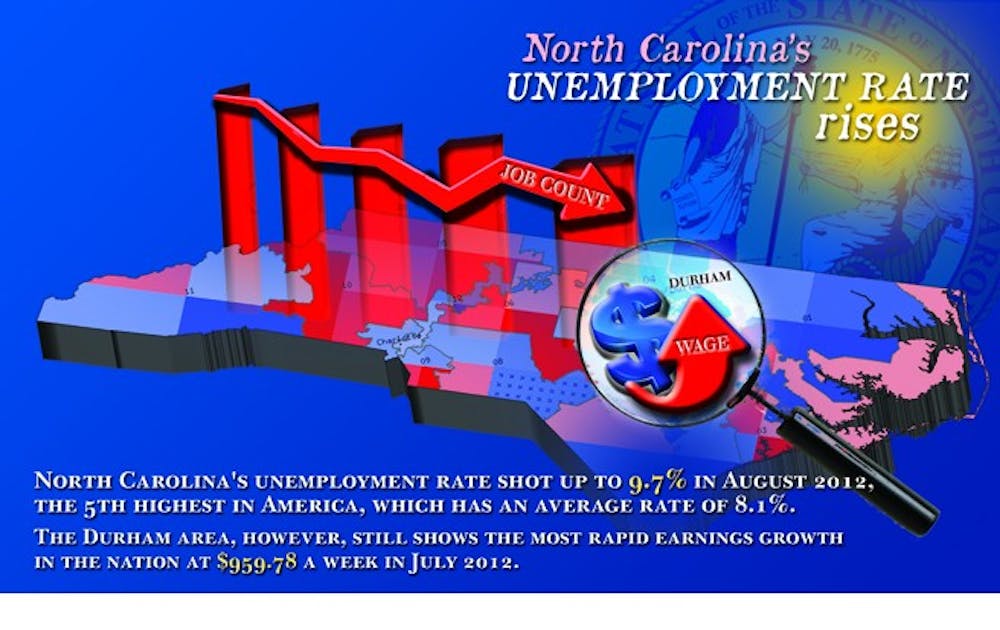The unemployment rate in North Carolina is the fifth highest in the nation.
The state’s unemployment rate rose for the second consecutive month in August to 9.7 percent, an increase of one-tenth of a percent, according to a report released by the state Division of Employment Security Sept. 21. This is down one percent from last year, when it was at 10.7 percent.
North Carolina has the fifth highest unemployment rate in the country, following Nevada, Rhode Island, California and New Jersey. The national unemployment rate is 8.1 percent.
Durham County is continuing its strive to improve its job market, Durham Mayor Bill Bell said. The Mayor’s office is gathering information about locally unemployed people, such as age group and skill sets, which will be presented at City Council workstations in October.
“This will help recruit new business and industries,” Bell said. “[It] provides a picture of our workforce to employers.”
The county had an unemployment rate of 8.2 percent in July, putting it among the dozen counties in the state with the lowest unemployment rates, according to data from the Employment Security Commission of North Carolina.
Bell attributed Durham’s economic force to a combination of local industries, including health care—especially driven by the Duke University Health System—software and dining.
The statewide numbers, however, may not represent a change from past economic trends.
“Nothing seen in these reports is any different from the general pattern over the past two years,” said John Quinterno, principal at South by North Strategies, a research and communications firm in Chapel Hill that specializes in economic and social policy.
Jobs added in North Carolina in the first six months of 2012 were largely added in the private sector, with trade, transport, warehousing and utilities responsible for creating the most jobs, according to a study by South by North. Professional and business services and leisure and hospitality services also comprised significant contributions.
Quinterno added that the February 2012 and August 2012 biannual reports show similar market dynamics—month-by-month variations in lower-level job and federal-level job creation.
The state’s current economic slump is rooted in the failure of the American Recovery and Reinvestment Act, the economic stimulus package passed in 2009 to save and create jobs, Quinterno said. At the peak of the recession in 2010, the rate of employment dropped in every major industry across the board—particularly the health, education and public sectors in North Carolina.
“The issue of unemployment fell off Washington’s radar,” Quinterno said. “There was no effort taken that was consistent with the magnitude of the problem.”
With elections coming up in six weeks, however, the issues concerning the economy are moving to the forefront of voter’s minds, Bell said.
Get The Chronicle straight to your inbox
Signup for our weekly newsletter. Cancel at any time.

